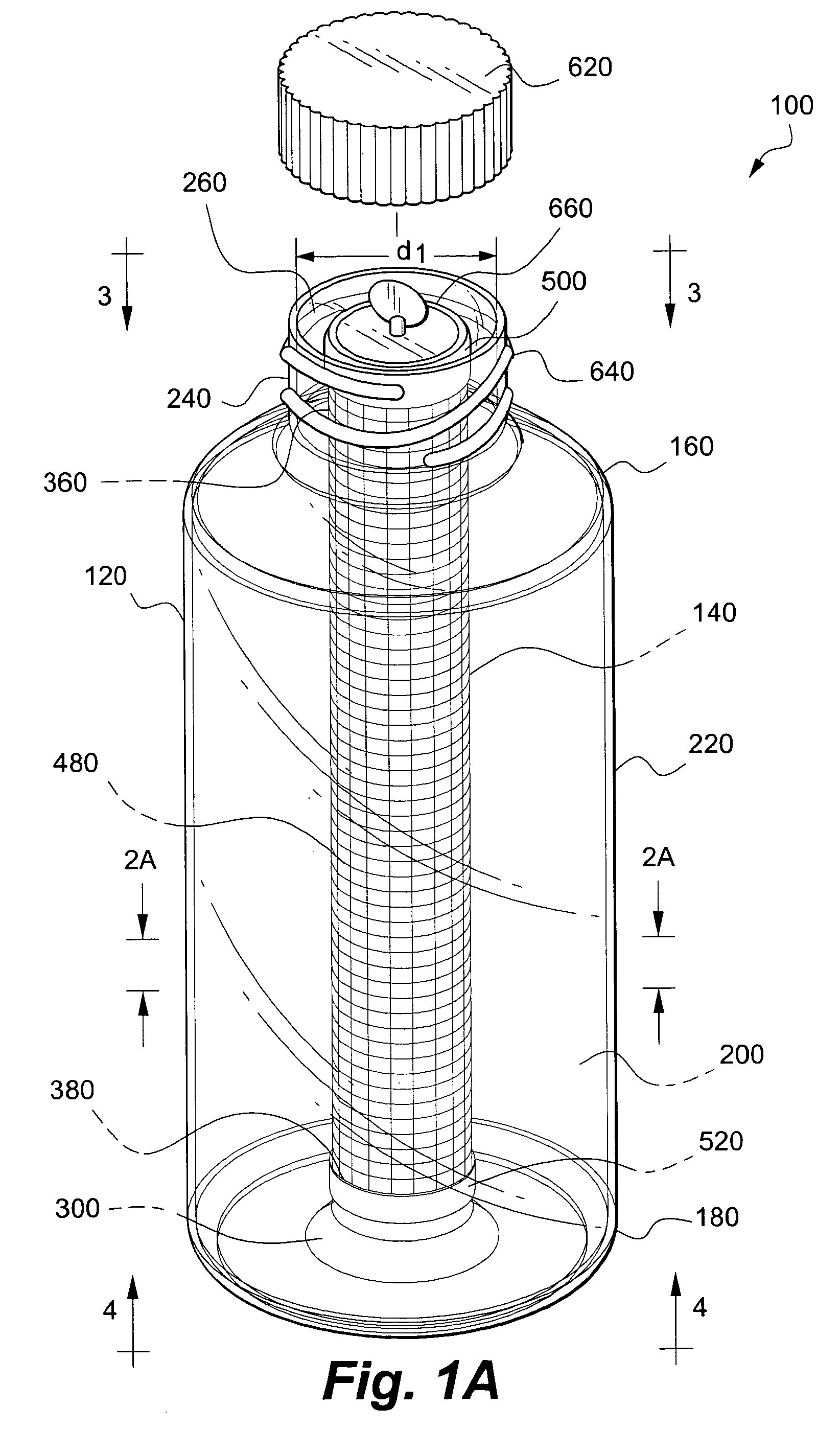Apparatus and method for co-culturing of cells
a co-culturing apparatus and cell technology, applied in the field of co-culturing cells, can solve the problem that the 013 roller bottle is not suitable for co-culturing of different cell lines
- Summary
- Abstract
- Description
- Claims
- Application Information
AI Technical Summary
Problems solved by technology
Method used
Image
Examples
example 1
METHOD EXAMPLE 1
Method for Transforming a Stem Cell Population into Cardiomyocytes
[0057]In this example the co-culture apparatus according to the invention includes a sleeve constructed of mesh coated with collagen.
[0058]Separate cell populations of autologous adult stem cells (progenitor cell line) and support cells are obtained from the same patient. Standard tissue culture methods are used to prepare and process both cell populations. Briefly, a patient's bone marrow is aspirated from multiple sites on the posterior iliac crest. Bone marrow samples are collected in heparinized tubes and resuspended in RPMI-1640 previously conditioned with 10% fetal bovine serum, 1% heparinized autologous plasma and supplemented with hydrocortisone, fungizone, and streptomycin. Cell clumps are disaggregated and divided into aliquots of 2×106 to 5×106 nucleated cells / ml.
[0059]Adult stem cells are obtained from the patient's bone marrow and separated over a Ficoll Hypaque (Pharmacia) gradient. The b...
example 2
METHOD EXAMPLE 2
[0070]Undifferentiated human embryonic stem cells (second cell line, i.e., progenitor cell population) are prepared as described by Thomson et al. in U.S. Pat. No. 5,843,780. Human blastocysts are obtained in vitro according to Bongso et al., (1989). Human embryos are cultured to the blastocyst state in G1.2 and G2.2 medium according to Gardner et al (1998). Blastocysts are selected for embryonic stem cell isolation. The zona pellucida is removed from the blastocysts by exposure to pronase (Sigma). Inner cell masses are isolated by immunosurgery in which blastocysts are exposed to 1:50 dilution of rabbit anti-human spleen cell antiserum for 30 minutes, then washed for 5 minutes three times in DMEM, and exposed to a 1:5 dilution of Guinea pig complement (Gibco) for 3 minutes, and washed twice in DMEM; lysed trophectoderm cells are removed from the intact inner cell mass (ICM) by gentle pipetting. ICM is either used to inoculate a cartridge 140 and transferred to the c...
example 3
METHOD EXAMPLE 3
[0077]An exterior receptacle 120 fitted with a sleeve 580 is inoculated with a viable first cell line (support cell line) suspended in a first liquid growth medium; a sufficient amount of the first cell population in the first liquid growth medium is added to the first chamber 200 so that at least portions of the interior surface 230 of first sidewall 220 and the surface 600 of the sleeve 580 are covered by the growth media. The exterior receptacle 120 is sealed and placed horizontally on a roller bottle-rotating machine to establish the support / first cell line. The rotation apparatus is initially rotated at low speed so that the first cell line of support cells attach to both the sleeve 580 and the inner surface 230 of the exterior receptacle 120.
[0078]At an appropriate time, the cartridge 140 is used to propagate the second cell line. More specifically, the second chamber 400 is inoculated with a viable second cell line (such as a population of pluripotent stem cel...
PUM
 Login to View More
Login to View More Abstract
Description
Claims
Application Information
 Login to View More
Login to View More - R&D
- Intellectual Property
- Life Sciences
- Materials
- Tech Scout
- Unparalleled Data Quality
- Higher Quality Content
- 60% Fewer Hallucinations
Browse by: Latest US Patents, China's latest patents, Technical Efficacy Thesaurus, Application Domain, Technology Topic, Popular Technical Reports.
© 2025 PatSnap. All rights reserved.Legal|Privacy policy|Modern Slavery Act Transparency Statement|Sitemap|About US| Contact US: help@patsnap.com



